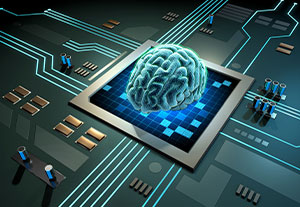Electronic Design Automation (EDA)
What is Electronic Design Automation (EDA)?
Electronic design automation (EDA) is a set of software, hardware, and essential services for designing chips and semiconductor devices. In the past, hardware architects used to sketch chip designs by hand and utilized siloed tools. However, with the billions of connections and multiple teams, the role of EDA is crucial in the hardware creation process. EDA is a simulated world where the circuits and designs are conceived and analyzed before making it to the real world. EDA has evolved with the meteoric rise of artificial intelligence (AI).
Further, with the challenging demands of time to market and costs, there is a paradigm shift in the EDA industry with the evolution of shift-left technology. Emulation and prototyping solutions boost productivity and help to meet challenging time and cost demands.
Cadence EDA solutions help design chips and semiconductor devices faster and more accurately than ever.
Why is EDA Important?
EDA plays a significant role in semiconductor design. It's also an essential tool to test the design's correctness and ensure reliability under varying conditions. With the rising customer expectation, it is required to design at pace. The advanced feature of EDA tools help design teams in increasing productivity and offer many benefits, such as
- EDA tools can handle increased complexity in chips due to more features over SoC.
- Stay ahead in the competition with reduced time to market (TTM).
- Advanced features in EDA tools help improve productivity.
- EDA tools help improve power, performance, and area (PPA).
- EDA tools with AI/ML infusion are helping in every aspect of semiconductor design, from simulation to design verification to emulation prototyping and chip rollout.
- So, EDA with AI makes it possible to produce the devices needed to keep up with customers’ expectations.
- You can boost your IC design, production quality, and speed by leveraging ML, resulting in impressive, quick results and happier customers.
How does EDA Work?
EDA performs three essential duties: simulation, design, and verification.
Simulation
EDA tools used for simulation can take a proposed circuit design and predict its results before live testing. EDA removes much guesswork and trial and error.
For example, suppose you're creating a chip that works in an autonomous driving system, pulling and processing data from edge devices installed in the car. The speed at which your system works may determine whether or not the vehicle can safely navigate in different traffic conditions. With EDA, you can predict whether the process your IC is responsible for facilitating happens quickly enough and with adequate accuracy.
Verification
EDA verification ensures the circuit will do what it's supposed to. EDA accomplishes this by examining the chip’s design to ensure all components are correctly connected—and in a way that will produce the best performance.
Therefore, the verification process is as important as design and simulation. Verification ensures conceptual elements can work in reality, resulting in feasible designs ready for production.
Ensuring Reliability (DFM)
Designs should meet the requirements of the manufacturing process, as a failure to meet these may lead to inefficient functioning and reduced reliability. Design for manufacturability ensures reliable design.
EDA with Cadence
Cadence EDA tools are engineered to produce higher-quality ICs faster than ever before. Using advanced AI, Cadence EDA systems empower you to simulate, design and verify your ICs to whatever specs your customer needs—while minimizing the time and resources needed. Cadence EDA tools include solutions for:
